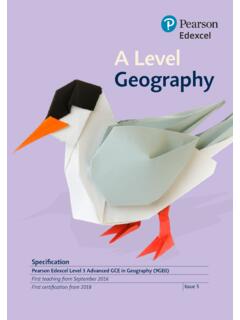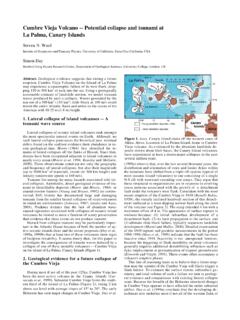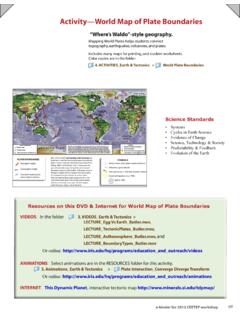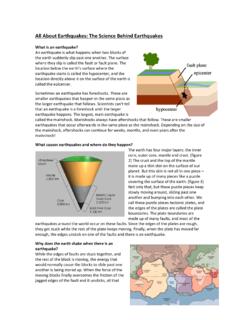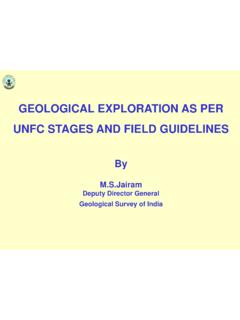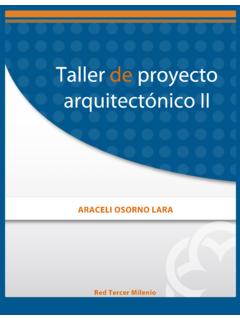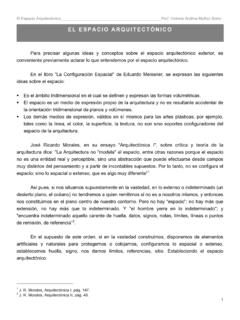Transcription of Pangea Puzzle - Florida Museum of Natural History
1 Pangea Puzzle Grades 4-8 Use fossil and rock evidence to reconstruct how the Earth may have looked approximately 290 million years ago when the continents were connected to form a supercontinent called World map Landmass Puzzle pieces Pangea Map Symbols handout Analyzing Evidence worksheetENGAGEShow students a current map of the world and ask them to name the continents. What do you observe about the shape of the continents? Some of the continents look as if they fit together like the pieces of a Puzzle . Discuss how South America and Africa may fit together. Do you think other continents fit together?About 100 years ago, a German scientist named Alfred Wegener made the observation that continents fit together.
2 This led him to suggest a new idea that the continents were once part of a single piece of land called Pangea . It split apart millions of years ago and the continents moved to their present position. Others had recognized the fit of Africa and South America, but it was Wegener who gathered other scientific data to support his in small groups, students will piece together the supercontinent Pangea based on fossil and rock evidence found on present day continents. Introduce the Pangea Map Symbols. Identify the symbols and discuss that these animals and plants once lived on Earth. Give each group the landmass pieces and have students arrange them into Pangea . If students need assistance, provide these hints: Observe continent shapes on the world map to help them decide if any appear as if they might fit together.
3 Look for all of the pieces with the fossil remains of Cynognathus and put them together first (South America and Africa). Put all of the landmasses with Glossopteris and Lystrosaurus near each other. Notice how two of the continents (Africa and Antarctica) have the end regions of Lystrosaurus. EXPLAIN How did continent shape help in deciding where to place the continents? Which two continents have the most obvious fit of the coastlines? How did the fossil and rock evidence help in deciding where to place the landmasses? Which fossil occurs on most of the landmasses? What does that suggest when these particular continents broke up? Locate Florida . To which continent was it once attached?EXTEND and EVALUATE Have each group explain their Pangea arrangement.
4 If students don t get the correct answer, have them explain their thought process and how they used the evidence to arrive at their conclusion. Students should understand that using the shape of the continents to fit them back together is using one type of evidence. Using the presence of the same type and age fossils is another. The presence of the same rock types is another form of evidence. Ask students if they can think of other types of evidence to search for that might be useful in solving their Puzzle . Have students use Wegner s Evidence for Continental Drift to write a paragraph to explain what their map shows about the Earth 290 million years ago. Explain how the fossil evidence helped to piece the landmasses together.
5 There is much information missing from the picture. For example, ancient shorelines were not the same as they are today due to changes in sea level and the tectonic process (continents colliding and pulling apart, causing rocks to be added or torn off). Scientists still debate the fine details of paleogeographic (ancient geography) reconstruction. It is more important to have students grasp the concept of how scientists look for clues, or evidence, and put the pieces together to solve a problem. Complete the Analyzing Evidence S EVIDENCE FOR CONTINENTAL DRIFT Evidence from fossilized organisms and mountain chains can be used to reconstruct the positions of today s continents and landmasses to form the supercontinent Pangea .
6 Glossopteris ferns had very heavy seeds that could not move by wind or drift on ocean currents. Fossils have been found on all the southern continents Australia, Antarctica, India, South Africa and South America. The Mesosaurus was a reptile that lived in fresh or brackish water and had limbs for swimming but was not a strong swimmer. It would not likely have had the capability to swim across such a large body of water as the Atlantic Ocean. Cynognathus was a mammal-like reptile that lived on land during the Early Triassic. It was as large as a modern wolf. Its fossils are found only in South Africa and South America. As a land-dominant species, it would not have been capable of migrating across the was another mammal-like reptile that lived on land.
7 It survived the Permian Period and was dominant during the early Triassic. Its anatomy suggests that these animals were probably very poor swimmers. By about 300 million years ago, a unique community of plants had evolved known as the European flora. Fossils of these plants are found in Europe and other areas. Scientists study rocks from mountain chains, and the fossils found in them, to under-stand continental drift. The mountainous terrains of separate continents match INFORMATIONA lfred Wegner was a German geophysicist who formulated the first complete statement of the continental drift hypothesis. Although he was not the first to suggest that continents have moved about the Earth, his presentation of carefully compiled evidence inspired decades of scientific debate.
8 Wegener s evidence, along with evidence provided by post World War II technology, eventually led to universal acceptance of the theory of continental Wegener collected diverse pieces of evidence to support his theory, including geological fit and fossil evidence. Geological fit evidence is the matching of large-scale geological features on different continents. The coastlines of South America and West Africa seem to match up. Scientists have found that rocks on the east coast of South America are the same as rocks found on the west coast of Africa. These rocks are different from rocks found in other places on Earth, suggesting that the continents were once and animal fossils also reveal evidence. There are various examples of fossils found on separate continents and in no other regions.
9 This indicates that these continents were once joined together because the extensive oceans between these land masses act as a barrier for fossil transfer. Examples include: Mesosaurus, Cynognathus, Lystrosaurus and did the continents move apart? The Earth s outermost layer (crust) is not one solid piece. It is broken into sections, like a cracked egg shell. The sections are called tectonic plates and continents are part of these large plates. The tectonic plates are floating on top of the molten rock and moving around the planet. When the continents and plates move it is called continental drift. Some plates move into each other, while others move away from each other. The movement of the plates is responsible to the formation of ocean basins, mountain ranges, volcanoes and the past 100 years, scientists have continued to find evidence supporting the idea that the Earth was once one supercontinent called Pangea .
10 Pangea formed before the early Permian Period began 290 million years ago and broke apart approximately 220-225 million years Pangea , Florida was once connected to the land mass that was to become Africa. When Pangaea broke apart, Florida remained attached to North America and drifted to its present position. Florida did not emerge as permanent dry land until approximately 30 million years ago. Before that time, the continental shelf underneath present day Florida was still submerged under an ancient ocean. Florida appeared when ocean water levels lowered (as water became locked in the ice as the Earth cooled) and sediment continued to build, raising the land surface. The sediment was primarily from two sources 1) the accumulation of marine fossils and 2) erosion washed down from the Appalachian Mountains.

